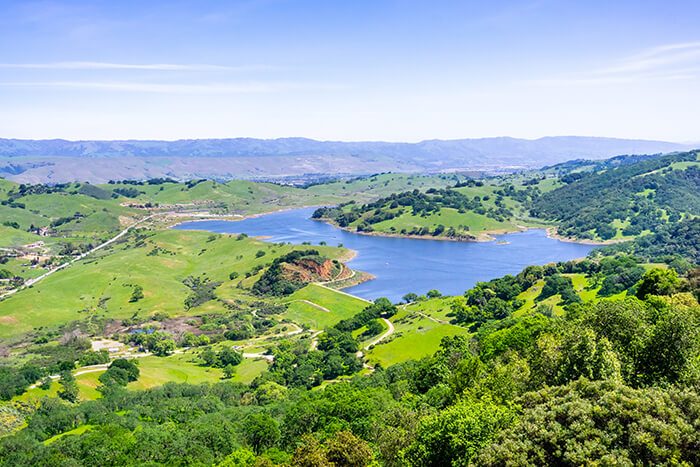Fred Peratt, head coach and owner of Environmental Enhancements, regularly attends his homeowner association clients’ landscape committee meetings. He looks at participating in the meetings as more than just a chance to hear what is going well (or not) on a site. He’s even found ideas for differentiating his business from competitors and has identified opportunities for new revenue streams.
Conversations at an HOA landscape committee meeting eight years ago prompted the Sterling, Virginia, company to build its organic lawn care program. A resident of the community was adamantly against all chemicals and synthetic fertilizers. She called on the condo community to solely use organic products on its 25-acre property.
“That meeting provoked me to think about it and figure out how we could be innovative and adaptive by incorporating organics into the business,” he says.
For this client, all organic was the only option. Peratt believes there is a middle ground between synthetics and all organic materials, but he recognized an opportunity to embrace sustainability through organic programs.
The company had already embraced organic products in its tree and shrub care program and perimeter control services for mosquitos and ticks. Being open to sustainable practices is central to Peratt’s long-term goals for the full-service business that offers landscape maintenance, design and installation, irrigation, and snow removal services. Currently, the $4 million company employs 40 people who work at HOA sites, retail centers, commercial office buildings, data centers and retirement communities. He plans to double both figures in the next five years.
“We are always looking for new ways to do things rather than just doing them the way we’re used to,” he says.
An uphill battle
Peratt acknowledges that offering an organic program can be an uphill battle. To date, about 15% of his clients are using an organic program. Most customers skip to the bottom-line cost. They see that an organic program is initially about 20% more than a traditional program and don’t consider long-term savings and environmental impact.
Pilot programs are one strategy Peratt has used to encourage customers to sign onto organic programs. The first was a 3-acre condo complex in Reston, Virginia, where the grass was a vivid green and there was not a single weed. Environmental Enhancements was already using an organic tree and shrub care strategy there. The integrated pest management program relied on scouting and organic oils, limiting the use of control products.
“We told them not to have great expectations in the first year, that it would be a 3-year transition. We said there would likely be weeds, and we could come in with soft chemistry if needed,” he says. “The committee had to get board approval and there was some arguing, but they decided to give it a try.”
Improving soil health is central to the success of an organic program. Peratt’s crews started with collecting soil samples from random spots across the property. The soil pH was in the mid-5 range with the optimum being in mid-6s. Local regulations limit annual lime applications, so it took two years to alter the soil pH. Aerating, overseeding and the use of soil enhancers to improve permeability are also integral to an organic program.
As predicted, Peratt received complaints about weeds. He reminded the board of their initial discussion and reemphasized patience. Soft chemistries were applied to treat the weeds and keep the clients happy. Results began appearing in year two: The turf was spreading and becoming denser. Not only were the plants and soil healthier, but the thick grass choked out weeds.
“Going into the second year, we said ‘We don’t want to use soft chemistry.’ We had a few weeds that second year, but no complaints,” he says. “By the third year, the property was on a totally organic program that did not require the use of any bridge products.”
Peratt never did raise the price for that Reston location, even as the program began to show successful results. “We felt that they needed to reap some of those benefits, but we did show them the difference in cost,” he says. “Like any process, it takes time. People don’t like time because they want to minimize complaints and then waffle on their decision. They now realize after three seasons that it was the right choice.”
Regular soil tests are central to the company’s approach. The state only requires a soil test every three years. Peratt believes that is not often enough when trying to make soil changes through organic programs. They test five to six random turf areas and three to four tree or shrub areas on a property each year.
“The soil test will tell us what to do for the specific property program, and it could potentially change every year based on the soil test results,” he says. “We have to evaluate and make recommendations to tweak certain applications.”
Customer education
Increasing conversations about sustainability doesn’t always translate to action when it comes with a higher cost. Educating customers about the benefits of an organic program is crucial. Peratt has heavily invested in marketing initiatives to highlight the benefits of organics.
Environmental Enhancements developed a brochure called “What’s In It For Your Community” and a Property Manager’s Guide, which explain the reasons for going organic. The pieces emphasize the safety benefits to people, pets and pollinators. It also includes examples of how organic programs support healthier plant growth and reduce overall maintenance costs.
“We have it broken down into four key components because you lose people when you start to talk science. When you start talking about soil and rhizomes you lose them, and they feel like you’re just feeding them stuff,” he says. “The brochure also includes an ‘Urgent Message from Fred’ where I talk about the benefits of organic programs.”
Peratt has also embraced video and digital marketing to get the message across. Inspired by the Netflix documentary, “Kiss the Ground,” Peratt began working with a marketing team to develop an animated video of his own to promote the benefits of an organic program.
“We also developed a sales team to sell the program,” he says. “We have taught them how to present the benefits of an organic program and how to emphasize them when speaking to existing and future clients.”
Seamless transition
Integrating an organics program into Environmental Enhancement’s traditional services lineup has been seamless, according to Peratt. From a labor perspective, no special training was necessary since the products are applied the same way as traditional applications. No special equipment or modifications to the trucks were needed either.
The company uses mobile time sheets so all employees have phones. They take photos of the property and upload them into the company’s database with a date and time stamp. The before and after photos offer dramatic comparisons to emphasize the effectiveness of an organic program. One difference Peratt has noticed is related to personal protective equipment requirements.
“There are fewer PPE requirements. Staff still wear gloves and boots, but the required protective gear is far less than when applying traditional chemicals,” he says. “I’m not sure if this will change as the government puts more focus on the chemicals or if it always will stay this way, but for now the products don’t carry the same warning labels.”
Working with the suppliers has been key to staying current on new products as they become available. When Peratt first introduced an organic program, he attended an educational event in Dallas and continues to follow changes to best practices as they emerge.
“Do your research with companies that have used organic programs, and understand the objections that you will get from clients and prospects,” he says. “Then do test pilot programs initially with documentation to support the program. Educate and openly communicate with your clients consistently.”
A sign of the times
Peratt works in a highly regulated region. Maryland, Washington, D.C., and Virginia have strict requirements for limiting fertilizer runoff to avoid polluting the Chesapeake Bay. Washington, D.C., has now instituted a noise ban, so Peratt is exploring options in battery-operated equipment for the accounts he has there. Rather than seeing the restrictions as negatives, he recognizes the opportunities.
“Property managers and engineers are always looking at sustainability, especially from a water-usage standpoint,” he says. “We talk about how our programs can help them meet those goals and add value.”
Water savings are top of mind concerns for property managers, and Peratt encourages them to consider organics as a way to reduce water usage. Healthier soils and lawns are more efficient at holding water leading to less water consumption through irrigation. To help commercial clients see this benefit, Peratt has launched a second pilot program using a smart controller app.
“We can now monitor specific areas and increase or decrease them based on weather and moisture levels,” he says. “It has been a great addition to our properties for the long-term ROI in water savings.”
Organics were Peratt’s entry point into offering sustainable lawn care practices. It was a step that didn’t require investment in new equipment or extensive training though it has taken time to scale up. But with an increasing focus on sustainable practices in the lawn care industry, taking the first step was the most important one. The company has concentrated on evaluating fuel efficiency and building denser markets and routing. They’re also looking at idling of the vehicles, and how electric cars could become an option for sales representatives.
“Sustainability is part of our mission and organics are a part of that,” he says.
If Peratt could turn back time, he would have been more diligent in developing a complete plan that encompassed research, development, documentation, marketing and sales initiatives. It was new for the company and there was not much data related to organics, so they were taking one step forward and many steps back.
“We thought the program would be a home run immediately, and we now know it is a long uphill process that takes tremendous commitment,” says Peratt.





